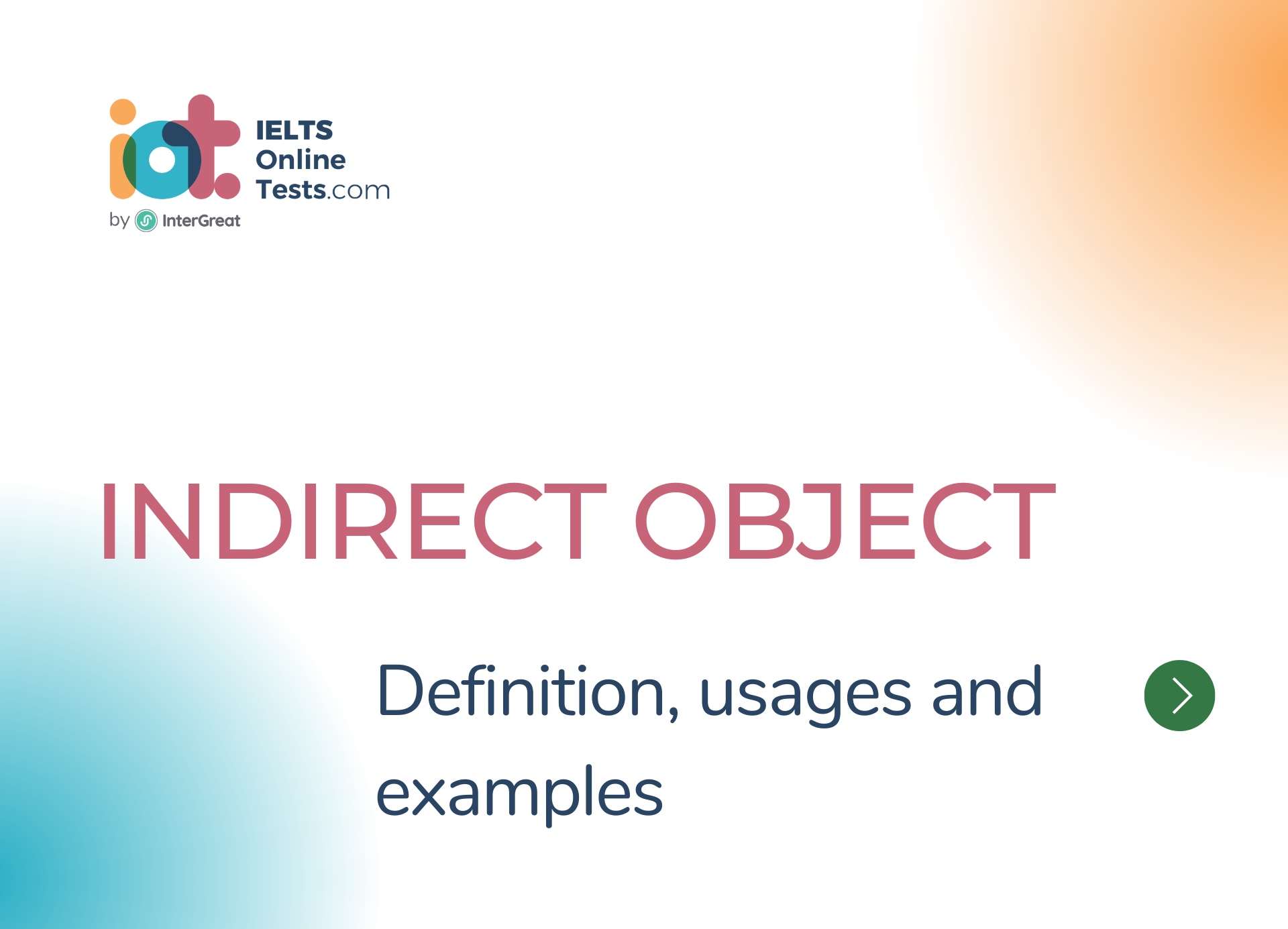
Indirect Object
The indirect object is a noun, pronoun, or noun phrase that indicates the person or thing to whom or for whom the action of the verb is done. It often precedes the direct object in a sentence and adds further information or clarification about the recipient or beneficiary of the action.
Here are some important points about indirect objects:
Definition: The indirect object is a noun, pronoun, or noun phrase that represents the person or thing that benefits from or receives the direct object.
- Example: "He gave me a gift."
- Here, "me" is the indirect object, indicating the recipient of the gift.
- Example: "He gave me a gift."
Position: The indirect object typically comes before the direct object in a sentence.
- Example: "She gave John a book."
- In this sentence, "John" is the indirect object placed before the direct object "book."
- Example: "She gave John a book."
Verb Types: Indirect objects are often associated with verbs that involve giving, showing, sending, or telling something to someone.
- Example: "They sent their friends postcards."
- The indirect object "friends" receives the action of the verb "sent."
- Example: "They sent their friends postcards."
Recognition: To identify the indirect object, ask the questions "To whom?" or "For whom?" after the verb. The answer will indicate the indirect object.
- Example: "She bought her mother a gift."
- Ask, "For whom did she buy the gift?" The answer is "her mother."
- Example: "She bought her mother a gift."
Indirect Object Pronouns: In some cases, indirect objects can be replaced by pronouns such as "me," "you," "him," "her," "us," or "them."
- Example: "He told me a secret."
- The indirect object "me" can be replaced by the pronoun "me": "He told me a secret" becomes "He told me it."
- Example: "He told me a secret."
Distinguishing from Direct Objects: Direct objects receive the action directly, while indirect objects receive the direct object.
- Example: "She gave John a book."
- "John" is the indirect object, and "book" is the direct object.
- Example: "She gave John a book."
Understanding the role of indirect objects helps in constructing sentences with clarity and precision. By including the indirect object, you provide information about the recipient or beneficiary of the action, enhancing the overall meaning and understanding of the sentence.




